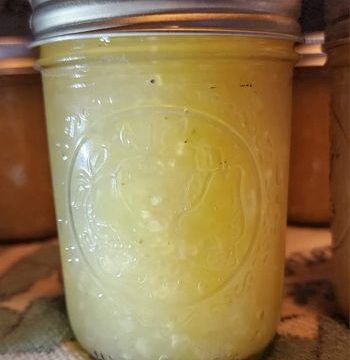Monkey butter is a delightful, unconventional spread that combines the rich, creamy flavors of bananas, coconut, and a hint of sweetness, making it a popular choice among those looking for a tasty way to enhance their breakfast or snack. This tropical-inspired spread is perfect for toast, pancakes, or as a complement to desserts, and it’s easy to make at home. This article will delve into the history of monkey butter, its ingredients, a detailed recipe, variations, serving suggestions, health benefits, and tips for success.
The Origins of Monkey Butter
While the exact origins of monkey butter are unclear, it is believed to have emerged in the United States, particularly within the realms of tropical and culinary fusion cuisine. The playful name likely comes from the idea that monkeys love bananas, lending a whimsical touch to the spread. Monkey butter has gained popularity in recent years, particularly among those who enjoy unique and flavorful spreads.
This delicious concoction is often associated with a laid-back, fun-loving spirit and is commonly enjoyed in tropical or coastal areas. Its key ingredients—bananas and coconut—are staples in many tropical cuisines, but monkey butter itself is a relatively modern creation, showcasing the creativity of home cooks looking to add flair to their meals.
Key Ingredients for Monkey Butter
To create monkey butter at home, you’ll need the following ingredients:
- 4 ripe bananas: Choose bananas that are fully ripe; they should have a few brown spots for optimal sweetness.
- 1 cup shredded coconut: Unsweetened coconut works best, but you can use sweetened if you prefer a sweeter spread.
- 1/2 cup brown sugar: Adjust based on your sweetness preference.
- 1 tablespoon vanilla extract: Adds depth and a pleasant aroma to the spread.
- 1 tablespoon lemon juice: Brightens the flavor and helps prevent browning.
- A pinch of salt: Enhances the overall taste of the spread.
Optional Ingredients
- Cinnamon: For a warm, comforting spice.
- Nutmeg: To enhance the flavor profile with a hint of earthiness.
- Chopped nuts: For added texture and crunch (e.g., walnuts, pecans).
Step-by-Step Recipe for Monkey Butter
Step 1: Prepare the Ingredients
- Choose Ripe Bananas: Begin by selecting four ripe bananas. The more spots, the better for sweetness and flavor.
- Gather Coconut and Other Ingredients: Measure out the shredded coconut, brown sugar, vanilla extract, lemon juice, and salt.
Step 2: Mash the Bananas
- Mash the Bananas: In a mixing bowl, mash the bananas using a fork or potato masher until you achieve a smooth consistency. It’s okay to leave some small chunks for texture.
Step 3: Combine Ingredients
- Mix Together: In a medium saucepan over medium heat, combine the mashed bananas, shredded coconut, brown sugar, vanilla extract, lemon juice, and salt. If you’re using cinnamon or nutmeg, add them at this stage.
- Stir the Mixture: Mix well until all ingredients are combined and the banana mixture is heated through.
Step 4: Cook the Mixture
- Cook Until Thickened: Continue to cook the mixture over medium heat, stirring frequently to prevent it from sticking to the bottom of the pan. Cook for about 10-15 minutes, or until the mixture starts to thicken and become spreadable.
Step 5: Cool and Store
- Cool Down: Once the monkey butter has reached your desired consistency, remove it from the heat and allow it to cool in the pan for about 10 minutes.
- Transfer to a Jar: Once cooled, transfer the monkey butter to a clean, airtight jar. Allow it to cool completely before sealing.
- Refrigerate: Store the monkey butter in the refrigerator, where it will keep for about 2 weeks.
Tips for Success
- Use Ripe Bananas: The riper the banana, the sweeter and more flavorful your monkey butter will be. Avoid using under-ripe bananas, as they may not provide enough sweetness.
- Adjust Sweetness: Feel free to adjust the amount of brown sugar according to your taste preference. You can also experiment with other sweeteners, such as maple syrup or honey, but keep in mind that these may alter the final flavor.
- Keep Stirring: Stir frequently while cooking to prevent the mixture from sticking to the pan and burning.
- Texture Preference: If you prefer a smoother consistency, blend the mixture after cooking with an immersion blender or in a food processor.
- Cool Completely: Allow the monkey butter to cool completely before sealing the jar to avoid condensation buildup in the container.
Variations of Monkey Butter
The beauty of monkey butter lies in its versatility. Here are some variations you can try:
1.
Chocolate Monkey Butter
- Add unsweetened cocoa powder (about 2-3 tablespoons) to the mixture for a chocolatey twist. You can also stir in chocolate chips after cooking for added richness.
2.
Nutty Monkey Butter
- Stir in finely chopped nuts like walnuts, pecans, or macadamia nuts for added texture and a nutty flavor.
3.
Spiced Monkey Butter
- Experiment with different spices such as ginger, allspice, or cardamom for a warm, spiced profile.
4.
Tropical Monkey Butter
- Incorporate diced pineapple or mango for a fruity twist. This adds freshness and complements the banana flavor well.
5.
Vanilla Bean Monkey Butter
- Use vanilla bean paste or seeds scraped from a vanilla pod instead of vanilla extract for a more intense vanilla flavor.
Health Benefits of Monkey Butter
While monkey butter is a delicious treat, it also offers several health benefits thanks to its main ingredients:
- Rich in Nutrients: Bananas are a great source of vitamins and minerals, particularly potassium, which supports heart health and muscle function. They also contain vitamin C, vitamin B6, and dietary fiber.
- Coconut Benefits: Shredded coconut is high in healthy fats, particularly medium-chain triglycerides (MCTs), which may boost metabolism and provide quick energy.
- Natural Sweetness: Using brown sugar as a sweetener retains some of the molasses, which adds trace minerals like calcium, potassium, and iron.
- Filling and Satisfying: With healthy fats and fiber, monkey butter can help satisfy hunger and cravings, making it a more wholesome option compared to processed spreads.
Serving Suggestions for Monkey Butter
Monkey butter can be enjoyed in various ways:
- Spread on Toast: Use it as a delicious spread for your morning toast or bagel.
- Pancake or Waffle Topping: Drizzle monkey butter over pancakes or waffles for a sweet, tropical breakfast treat.
- In Oatmeal or Yogurt: Stir a spoonful into your oatmeal or yogurt for added creaminess and flavor.
- Dessert Dip: Use monkey butter as a dip for fresh slices of apple, pear, or other fruits.
- Swirl in Ice Cream: Incorporate monkey butter into vanilla or coconut ice cream for an indulgent dessert.
- Scones and Muffins: Serve it alongside freshly baked scones or muffins for a delightful brunch option.
Storage Tips
- Airtight Container: Store monkey butter in an airtight container in the refrigerator to maintain its freshness.
- Temperature: If you find the spread is too thick after chilling, let it sit at room temperature for a few minutes before using, or give it a quick stir to loosen it up.
- Freezing: While monkey butter can be frozen, the texture may change upon thawing. If you choose to freeze it, consider using freezer-safe jars or containers and leave some room for expansion.
Conclusion
Monkey butter is an incredibly versatile and delightful spread that brings a taste of the tropics to your kitchen. With its combination of bananas, coconut, and subtle sweetness, this unique condiment is perfect for enhancing a range of dishes, from breakfasts to desserts.
By following the simple recipe outlined above and experimenting with various flavor options, you can create your own homemade monkey butter that caters to your tastes and dietary preferences. Whether enjoyed on its own or used as an ingredient in other dishes, monkey butter is sure to become a cherished addition to your culinary repertoire. Enjoy the fun of making this delightful spread and the satisfaction of sharing it with friends and family!

